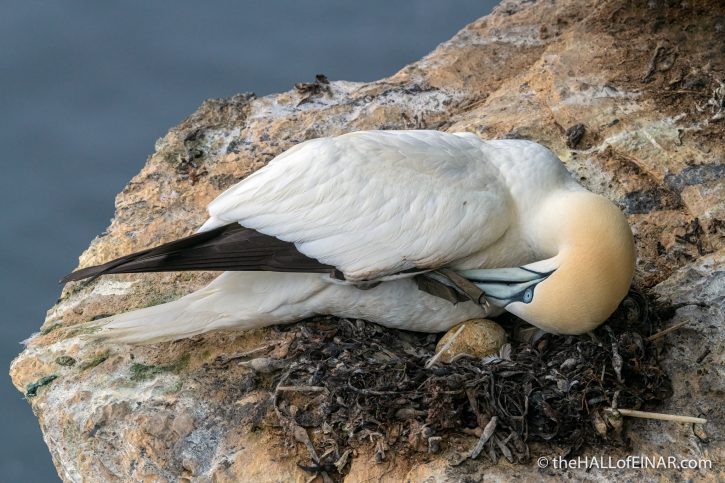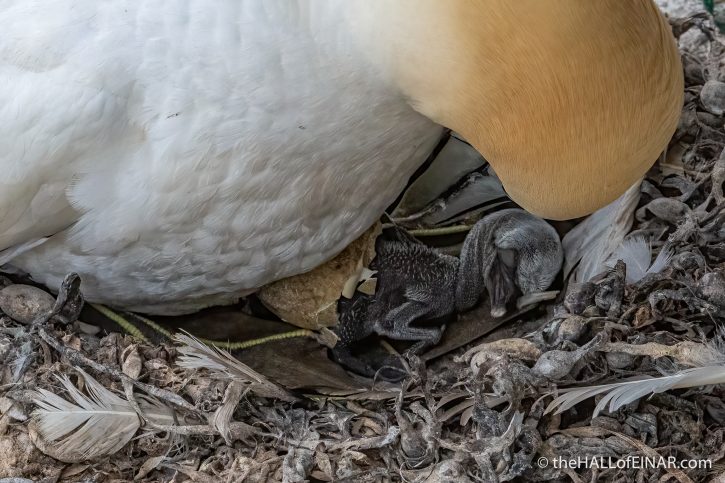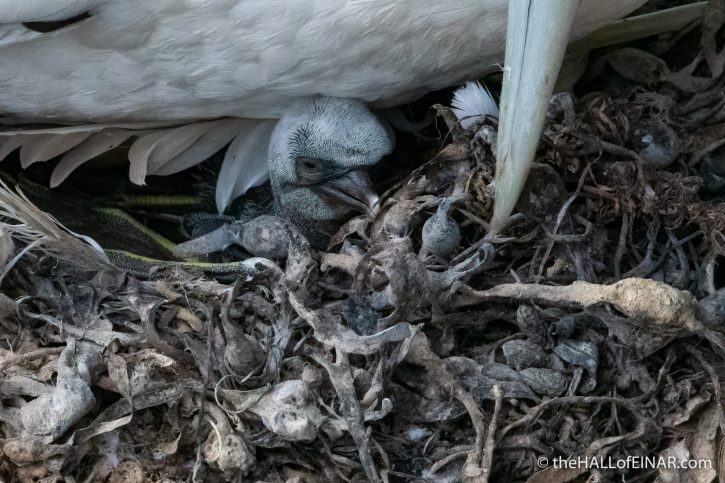Greta Gannet
We’re watching the Gannets at Noup Head when the Puffin Whisperer gets very excited. She’s seen one with an egg. The adult is sitting on a decent-sized scrappy pile of dried seaweed, which they use as their half-hearted nest.

It’s a beautiful adult with that exceptional blue eye-ring.

It’s part of a very busy Gannet colony, with adults flying past, some of them with nesting material in tow.

Cliff space is at a premium and there are vicious-looking fights between neighbours. Our incubating Gannet is the one in the bottom left here:

Gannets use their feet to incubate their eggs, rather than having a warm brood-patch of skin on their bellies. It’s late in the season when we see this one with an egg. Many of the other nests nearby have quite large fluffy chicks already. It’s possible that this pair lost their first egg and have laid another.

I send a message out asking if it’s rather late in the breeding season to expect it to hatch now. Apparently hatching can take up to 36 hours. That’s as bad a childbirth.
We decide to check back the next day and are beside ourselves to see a Gannet chick in the process of hatching. It’s the most extraordinary experience to be witnessing. It looks for all the world like a charcoal-black dinosaur and a scene from 100 million years ago. Its eyes are yet to open.

The adult is incredibly attentive. The delicacy of movement, the precision of the beak placing the seaweed and fussing around the newly-hatched chick is something I’ve never experienced before.
A day later and its eyes have opened and it’s able to hold its own head up. It still has its egg-tooth for breaking open the shell on the end of its beak. The Puffin Whisperer names the chick Greta.

If it’s going to survive, it’s going to be still perched on these cliffs in November, in winter gales. It’s going to need all the luck it can get.

With such an attentive parent I feel it has a very good chance.